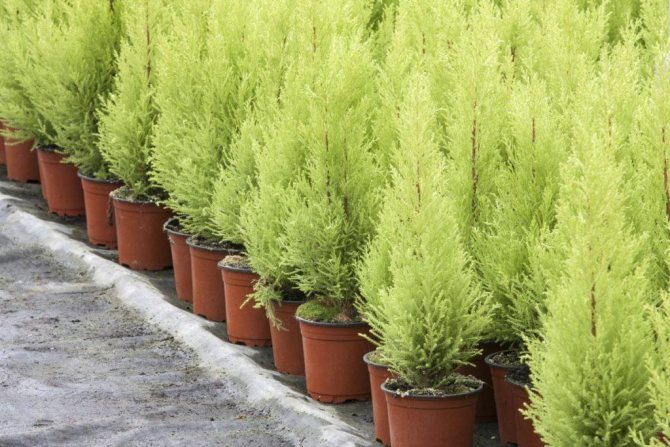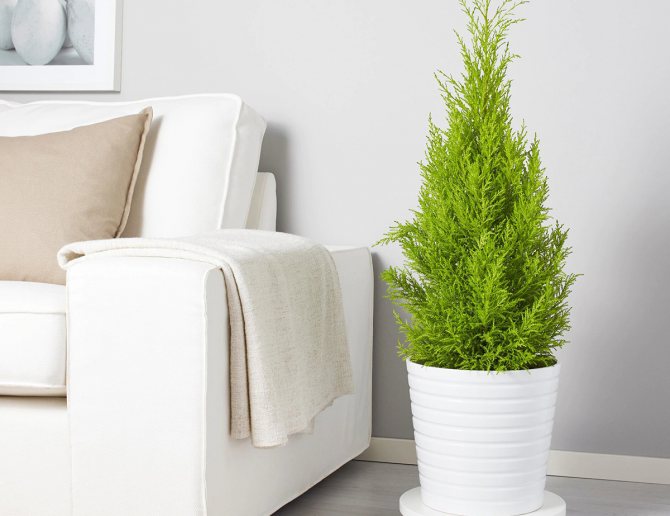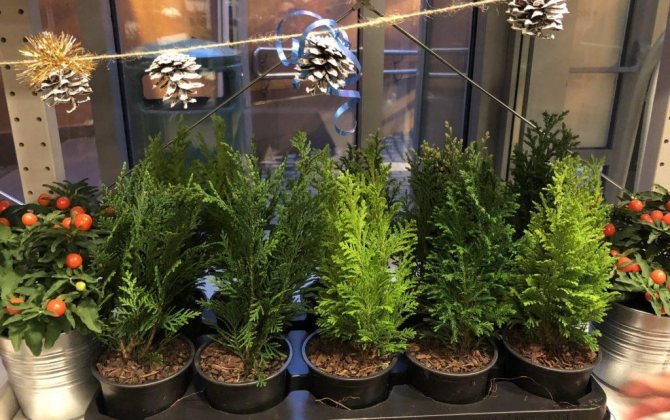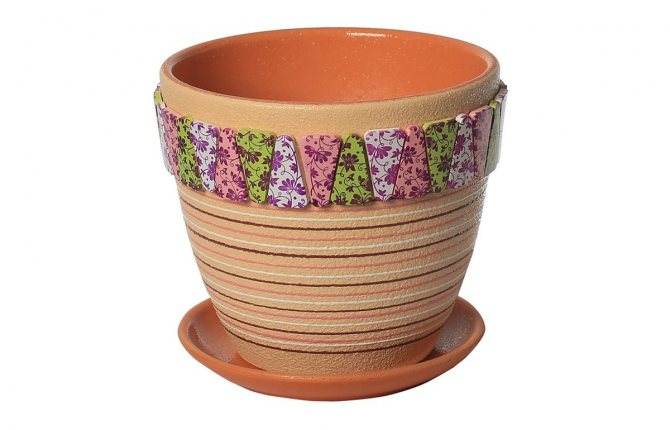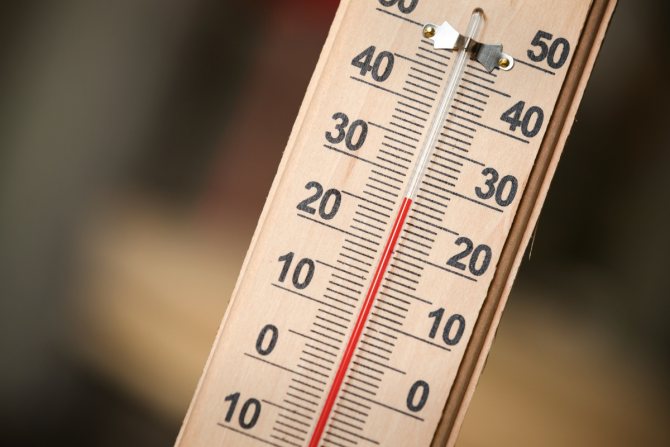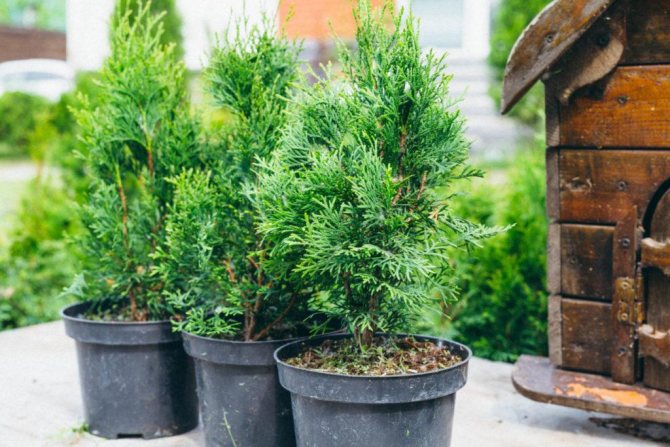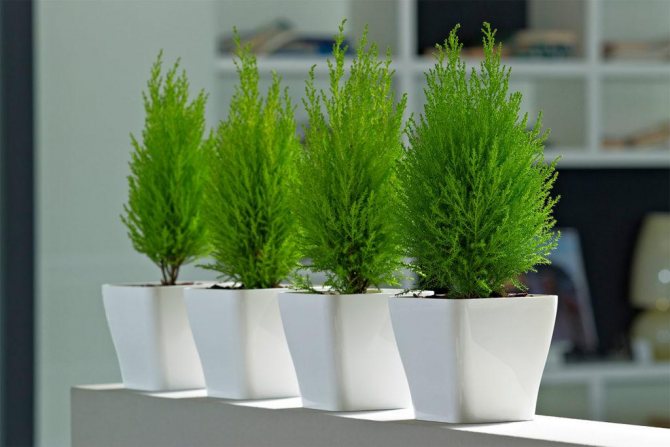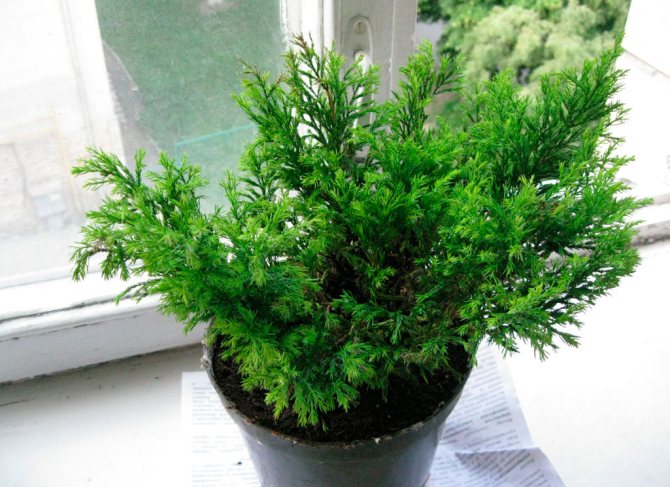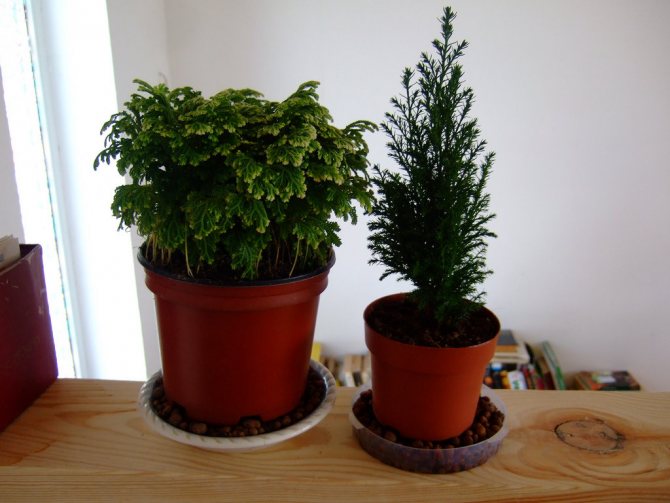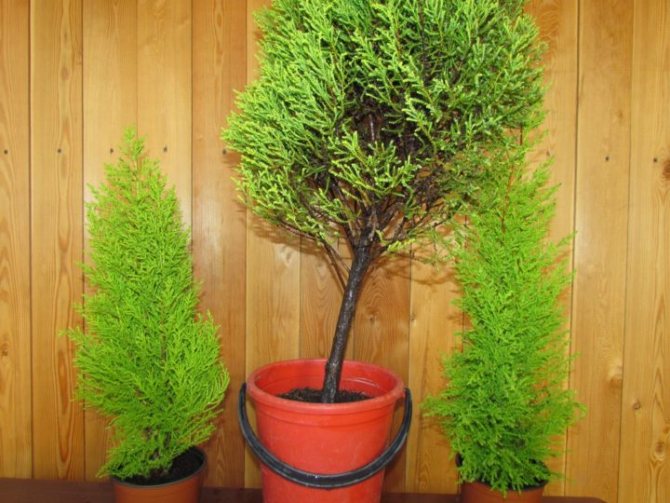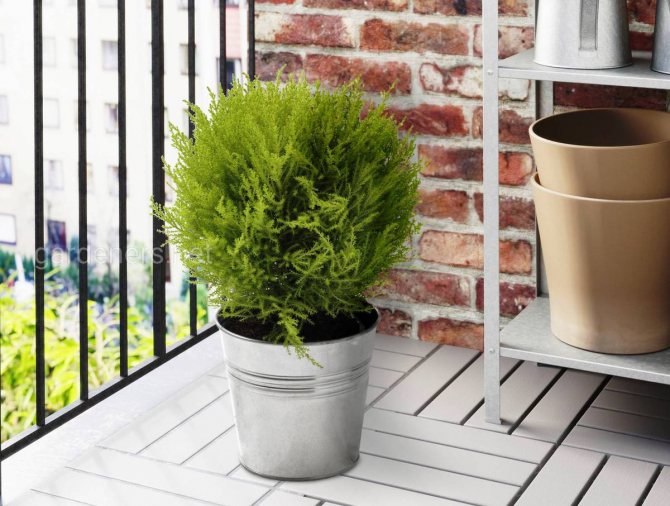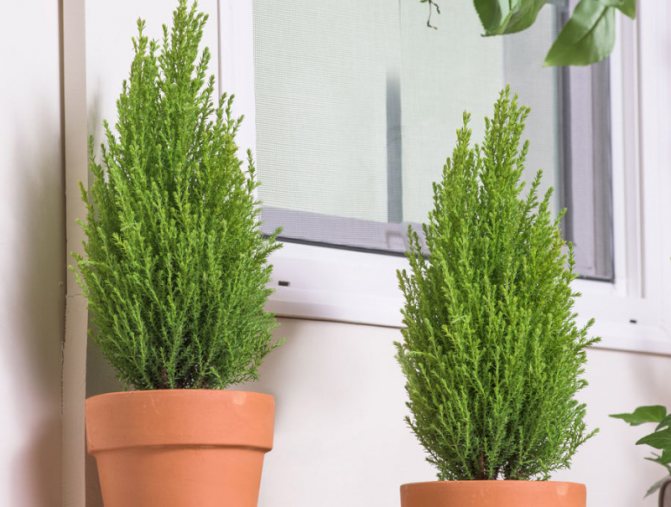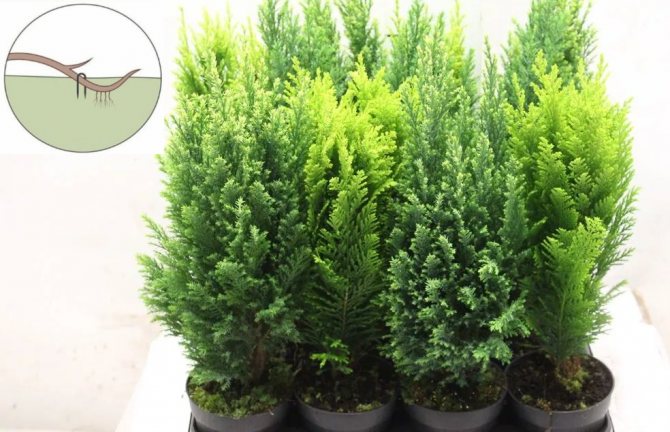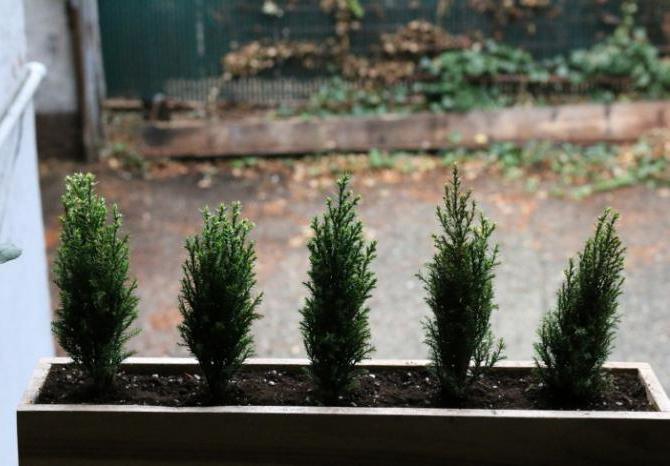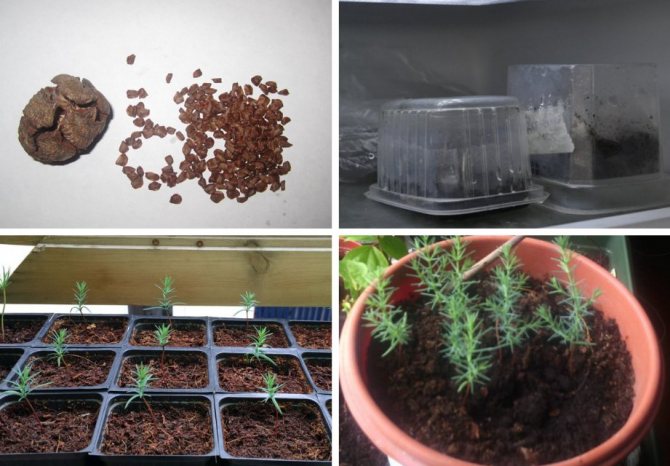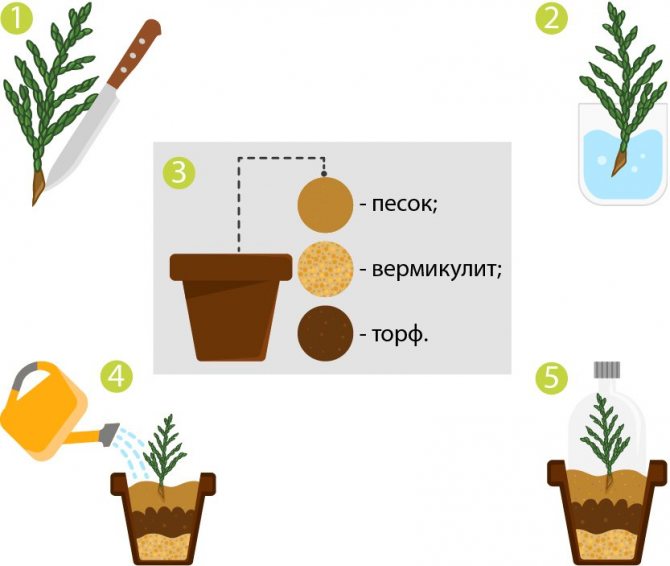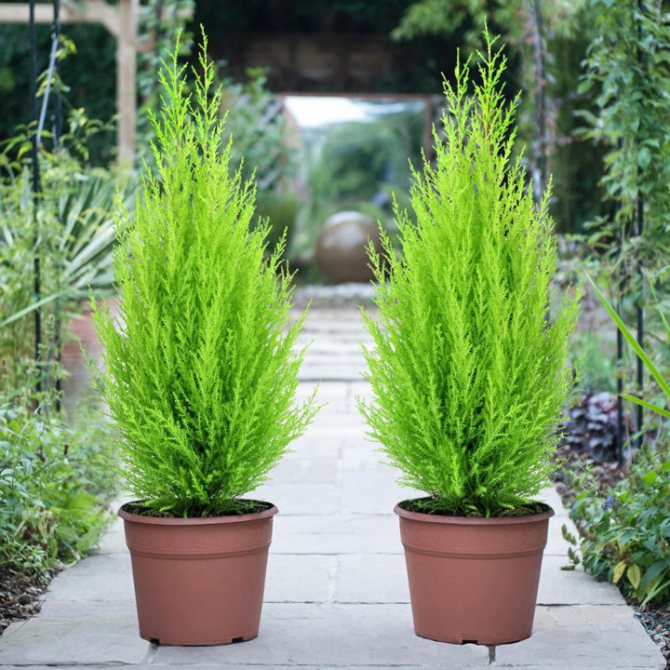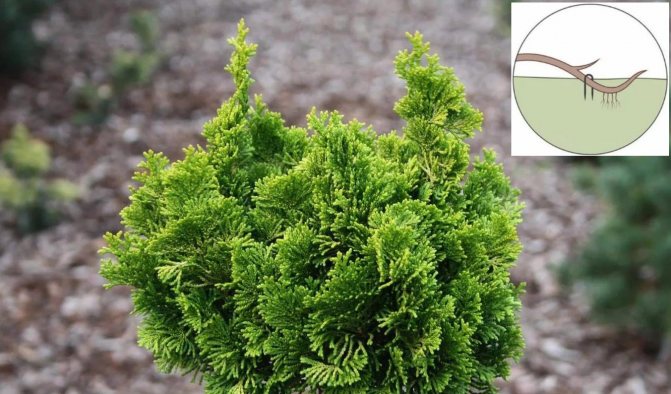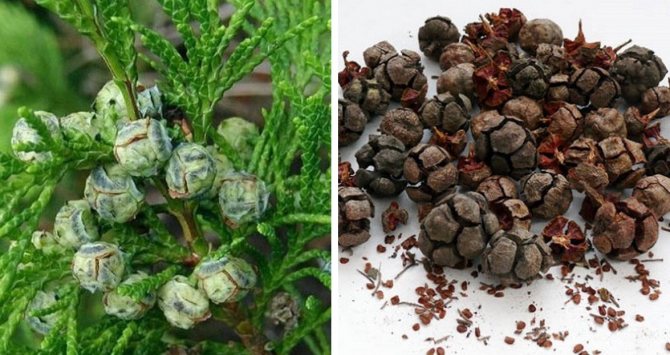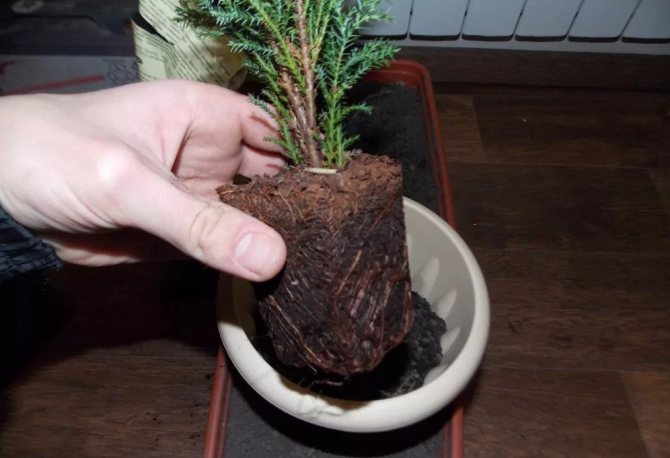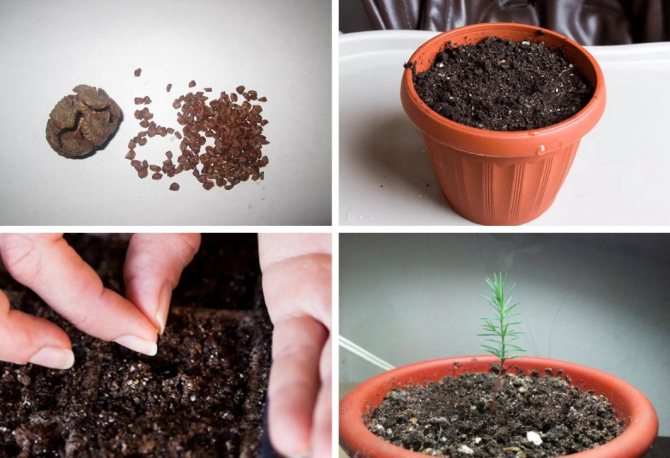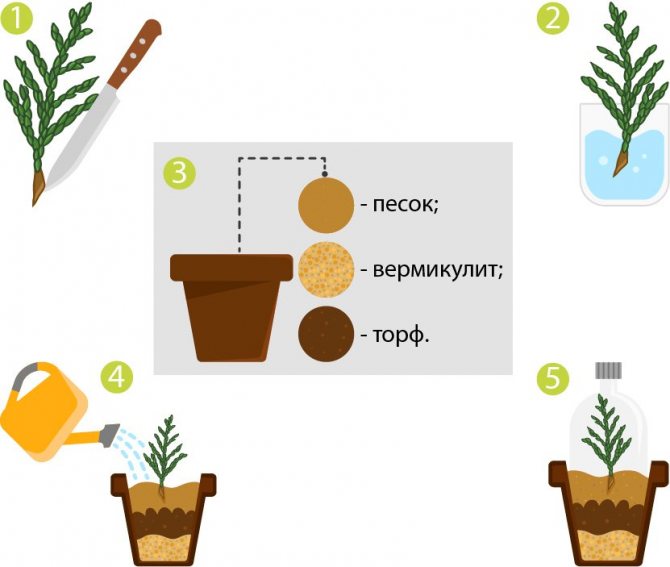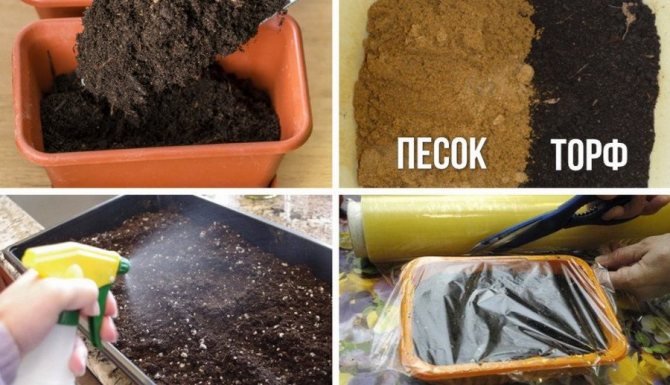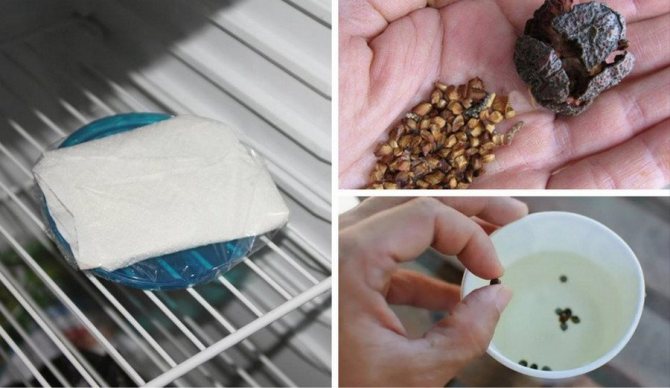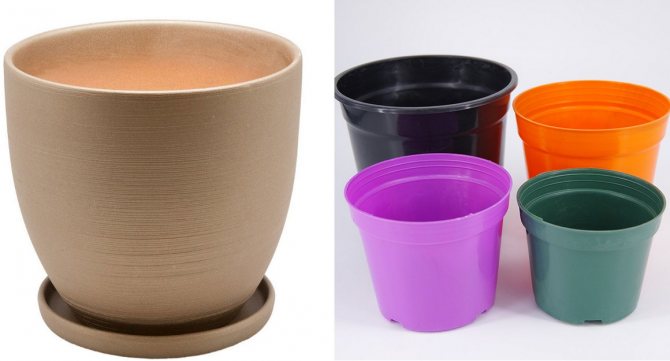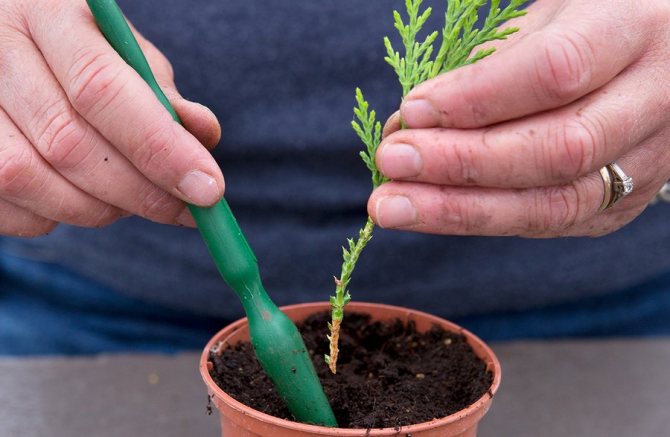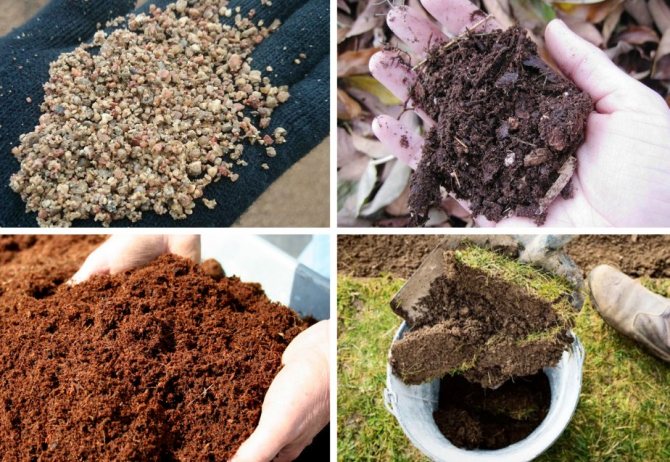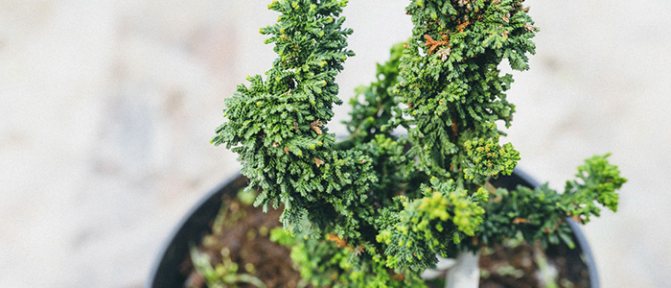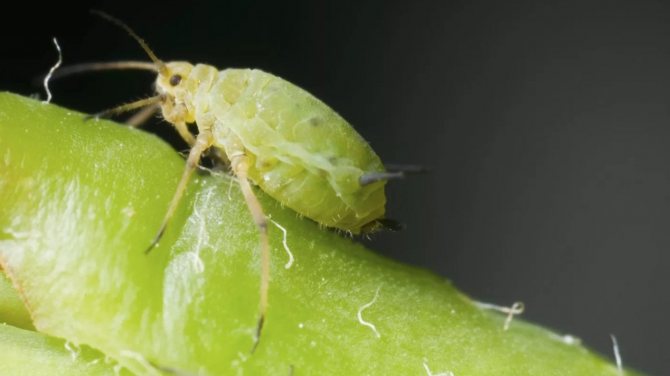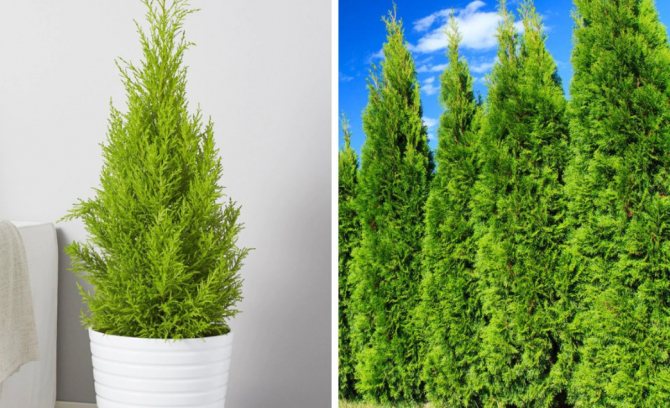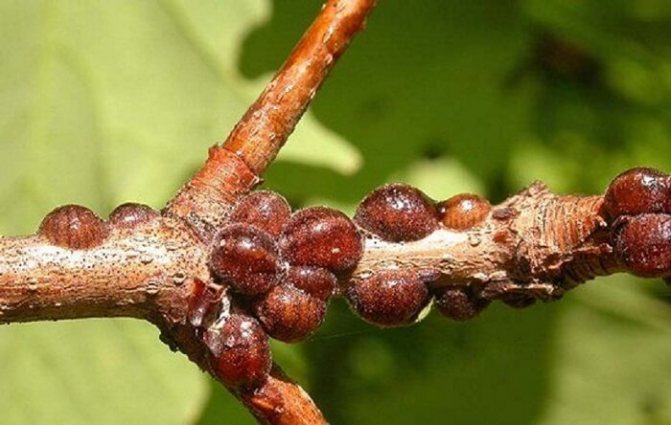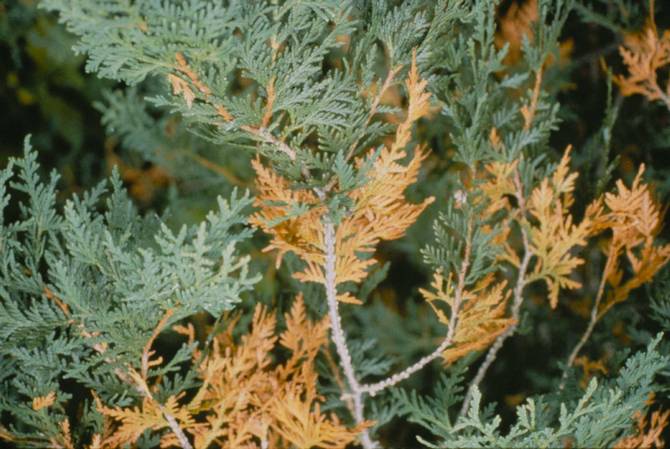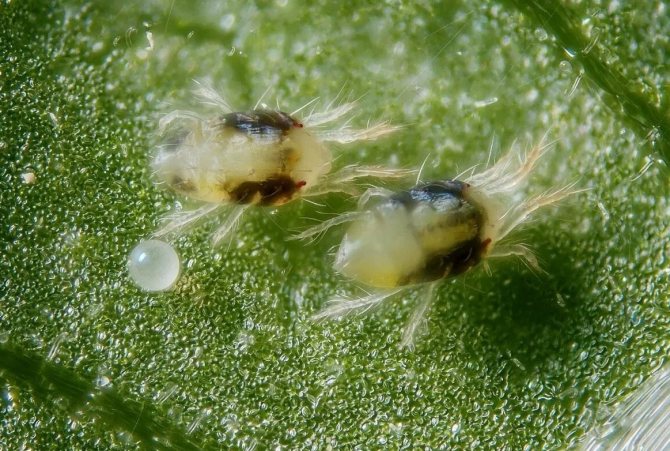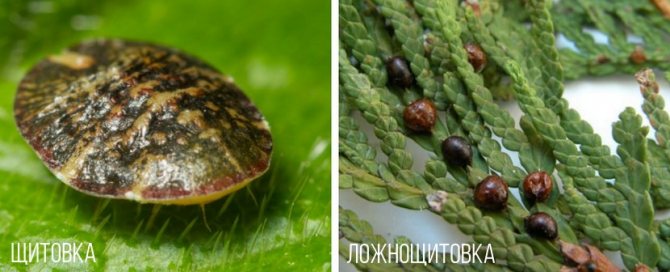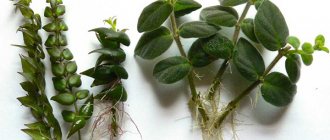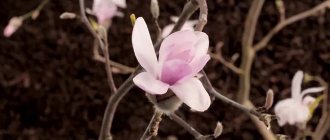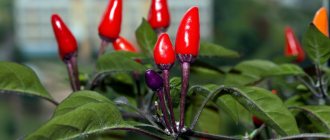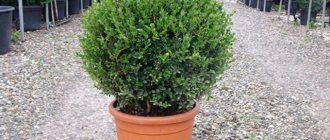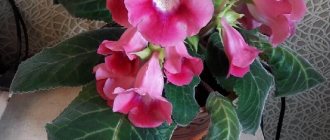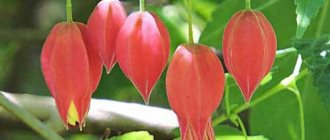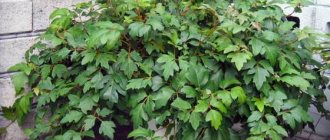Indoor cypress, home care for which is not very difficult, has become a very popular plant today. It has a decorative appearance, which determines the choice in its favor for the maintenance of the house.
Mainly 2 types of cypress are used for cultivation: evergreen cypress (C. semperverens) and Kashmir cypress (C. cachmeriana). In nature, these small trees are found in humid subtropical regions. They often grow along the banks of water bodies. Under natural conditions, these types of cypress trees grow up to 4 m in height and have a pyramidal or narrowly rhombic crown shape. Leaves in the form of dark green or bluish-green scales cover vertically directed branches tightly adhering to the lignified trunk. All parts of the plant contain essential oils with phytoncidal properties, due to which the plant exudes a characteristic coniferous smell and cleans the air of pathogens.
Breeders have bred more than 200 varieties of cypress trees, very similar to cypress trees, which can be grown indoors. The most suitable for these purposes are the thuose cypress and pea cypress, the care of which is no different from the care of a house tree. These plants are very similar to the home cypress, but are smaller and more unpretentious. Cypress trees have flatter branches and small cones up to 1 cm in diameter. Different varieties of needles can be silver-blue, golden or bluish-green.
What kind of cypress can be grown in a pot
The Cypress family includes a large number of genera and species. Cypress, thuja and juniper are the most famous of these.
Common varieties
There are few domestic cypress trees. These plants are distinguished by their slow growth. Next, we will talk about the most popular of them.
- Evergreen has a pyramidal crown and leaves pressed to the trunk. It grows up to 2-3 m. There are small horizontal and pyramidal varieties that got their names from the shape of the crown.
- The height of the large-fruited reaches 2 m. Its lower branches are dark green, and the upper ones are light green. The Goldcrest variety is popular, which has golden needles and a lemon aroma. It is also called New Year's cypress.
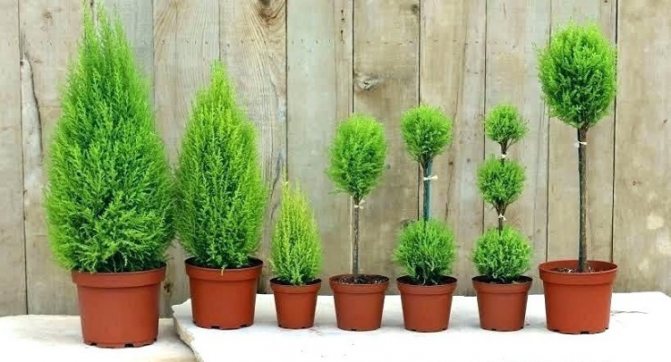
Indoor cypresses fill the room with an incredible aroma
Among these or other species and varieties, you can choose the most suitable cypress or cypress, home care for it should be provided in accordance with the characteristics of the culture.
For your information! The homeland of Cypress is the Mediterranean, the Far East, the Black Sea and North America. These plants have existed on the planet since the Cenozoic era.
Features of proper care for indoor cypress at home
Caring for a home cypress tree requires careful attention from the grower. How to plant a cypress and grow it is described below.
Temperature
How to care for an avocado - a plant at home
The room temperature conditions that indoor cypress needs are optimal during spring, summer and autumn. However, in winter the situation changes. Since the heating is turned on at this time, the currents of hot and dry air can harm the crop.
When growing, it must be borne in mind that in the wild, where these bushes grow, the temperature is 10 ° C. In order to ensure the care of the cypress tree during the dormant period, it is recommended to put it on a loggia or balcony, where it is cooler.
Lighting
A cypress in a pot does not tolerate direct sunlight. It is recommended to put it on the windowsill in the apartment by the north-facing window. You can also put it next to the south window, but to the side, so that the sun's rays do not fall on it.
It is believed that the cypress belongs to shade-tolerant plants, but you need to be careful with this. With a lack of lighting, its growth and decorative qualities will deteriorate.
Note! If the indoor cypress has grown and become a large plant, then it can be placed on the floor next to the windows.
Watering
How to care for a cypress in a pot at home? First of all, it is necessary to provide a certain amount of moisture. This plant needs regular watering. Do not allow the topsoil to dry out. As soon as the moisture begins to evaporate, it's time for another watering. This usually needs to be done 2-3 times a week. Larger plants can retain moisture longer, so they can be watered less frequently.
In winter, there is no need for frequent watering, at this time, once every 10-15 days is enough.
Although moisture is necessary for the plant, care must be taken to avoid stagnant water. In this case, the roots may start to rot.
Spraying
Homemade cypress loves high humidity. The branches dry out much faster than the soil, so not only watering, but also spraying is necessary. In hot weather, you need to spray it more often to prevent the plant from drying out.
During the autumn and winter period, when caring for cypress, spraying should be carried out much less frequently than in spring and summer.
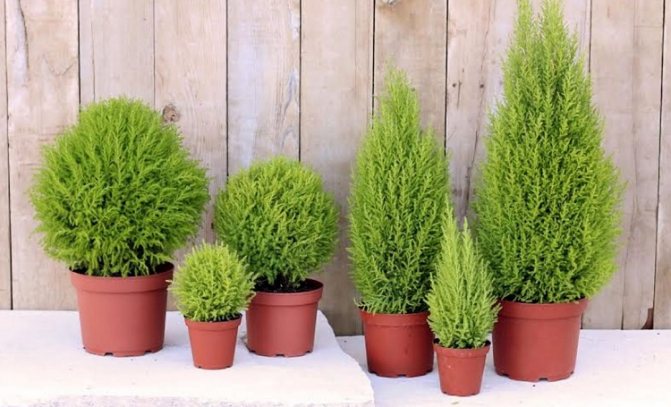

Evergreen cypress requires a lot of water
Humidity
This plant prefers high humidity. To provide it, you can do the following:
- spray the branches with water several times during the day;
- hang wet rags in the immediate vicinity;
- put the pot on a pallet with high sides and a layer of drainage and pour water into it;
- use specialized devices for air humidification.
At the same time, you need to take into account the time of year, since during the fall and winter, the decorative cypress on the balcony will not need to humidify the air.
Important! In those apartments where it is especially hot in summer, it is important to carry out additional spraying of the cypress with room water.
Priming
You can purchase a special soil for conifers or make the soil of a suitable composition yourself: take two parts of leafy soil, one by one - crushed peat and sand.
Top dressing
Fertilizers are not always helpful. This statement is a myth. Cypress roots are very tender and too frequent feeding can cause burns. It is recommended to use fertilizers that are intended for conifers.
Instead, you can take a complex top dressing, but the concentration should be half the usual one specified in the instructions.
Features of winter care
In winter, the plant needs special conditions.
- You need to limit watering. The need for moisture is reduced, since the roots can begin to rot when waterlogged.
- In winter, the temperature is required to be between 5 ° C and 10 ° C. It is easier to provide if you put the plant pot on the balcony for a dormant period.
- Top dressing in the winter for the plant is not required.
In winter, the life of the plant slows down. He will remain in this state until spring comes.
Pruning
It is necessary to trim old and diseased branches so that they do not take away the vitality of the plant. To form a beautiful crown, formative pruning is carried out.
Landing site and lighting
Indoor cypress is best planted in a small pot that can be placed on a windowsill. Since this is a light-loving plant, it is worth choosing places for it in the southern part of the house. In a warm season, the tree should be taken outside.
Of course, a cypress tree can also be planted in a darkened place. However, over time, the plant begins to stretch and eventually loses its shape. In low light in winter, the needles of the cypress tree begin to turn green. This does not apply to all species. Those varieties of plants that stand out from the rest with their color of needles, only with a sufficient amount of light, retain their original color. However, with an excess of sunlight, the cypress can get burned. The needles quickly begin to turn yellow and crumble. As a result, the cypress dries up.
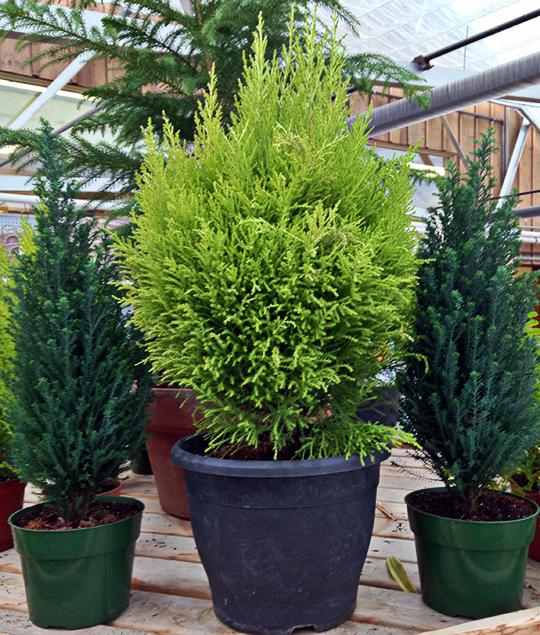

In order not to ruin the plant, it is better to put it on the windowsill in the cold period, placing it closer to the window. This will give the tree the right amount of light and a little coolness. With the onset of warm days, it is better to remove the cypress from the southern window sill and rearrange it to the northern window. In summer, the plant can be taken out to the balcony or into the garden. However, it is better to put it in a slightly darkened place.
How indoor cypress reproduces
How to care for a cactus: examples at home
How to grow a cypress tree? You need to choose from the existing methods of reproduction: using seeds, cuttings or aerial shoots.
Germinating seeds
Reproduction can be done using seeds. They are germinated in plastic containers, provided with heat, moisture and light. When rooting occurs, the sprouts are planted in separate pots.
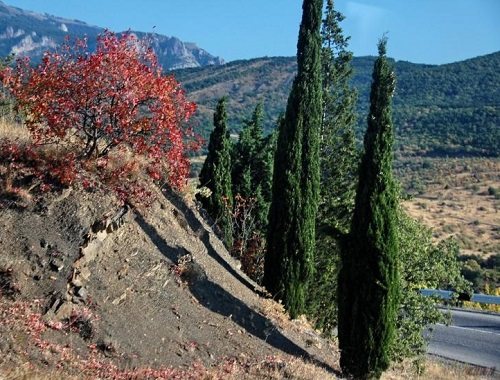

Tree in vivo
Rooting cuttings
Cuttings are carried out in the spring or throughout the fall. To do this, cut off shoots 10 cm long with a heel. Remove the leaves from the bottom. Before planting, you need to hold it in the root solution.
When grown, the stalk is planted in the ground at a third of the height, watered and covered with a film or an inverted jar. Germinate in a warm and well-lit place. In this case, exposure to sunlight is undesirable. Once every two days, you need to remove the shelter and ventilate. Water every time as soon as the soil begins to dry out.
Note! Rooting of the cuttings will take place within two months. After that, they are planted in separate pots.
Air layering
Can be propagated with aerial roots. They are formed from the kidneys over a period of several months. Then they are detached and germinated in a pot.
Planting a cypress
To grow this plant, it is worth using a certain soil composition. To make it, you should take one part of sand, two parts of leafy soil and four parts of turf. A little red crushed brick should be added to such a mixture. The soil should be sufficiently nutritious and, of course, moisture permeable. At the bottom of the pot, it is necessary to pour red crushed brick or expanded clay as drainage. After planting or transplanting, the cypress should be placed in the shade. This will help the plant to cope better with stress. You can also spray the crown more often and use a rooting stimulant. In addition, watering should be limited. It can only be resumed after the shoots have returned to their normal shape. It is worth feeding the plant only a month after planting or transplanting.
Transfer
Potted hyacinth: home care
For the plant to grow well, it must be transplanted. In the first years of life, this is done every year, when the cypress grows, a transplant is required every few years.
The new pot should be larger than the previous one. For young plants, increase the container by 1-2 cm, for adults by 5-7 cm. The soil in the pot should be for conifers.If you prepare the soil yourself, you need to take for it:
- leafy ground - 2 parts;
- peat - 1 part;
- sand - 1 part.
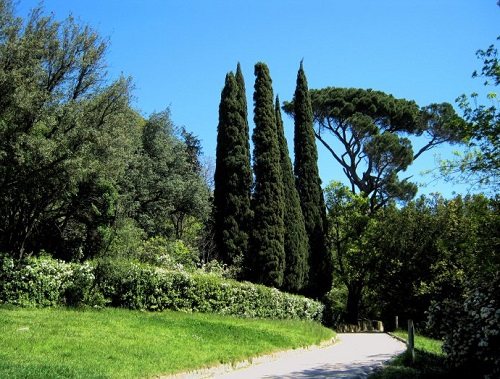

Use in garden design
Before pouring into the pot, the composition is thoroughly mixed, and a drainage layer in the form of small stones is added to the bottom.
Step-by-step transplant procedure:
- Water well during the day.
- Drainage and a small layer of new soil are poured into the bottom of the new pot.
- The tree is carefully transplanted to a new location.
- The soil is poured between the walls of the pot and the plant, then compacted a little.
- The earth is poured from above in the required amount.
- Watering.
The pot is placed in the shade for a week.
Note! You need to transplant the plant in early spring.
Diseases and pests
Conifers are rarely affected by disease. When grown at home, violations of agricultural technology can cause a decrease in immunity. Improper care often leads to rotting of the root system, drying out of the branches. In this case, it is required to transplant into a fresh substrate, treat the rhizome with a fungicide solution, after removing the affected areas.
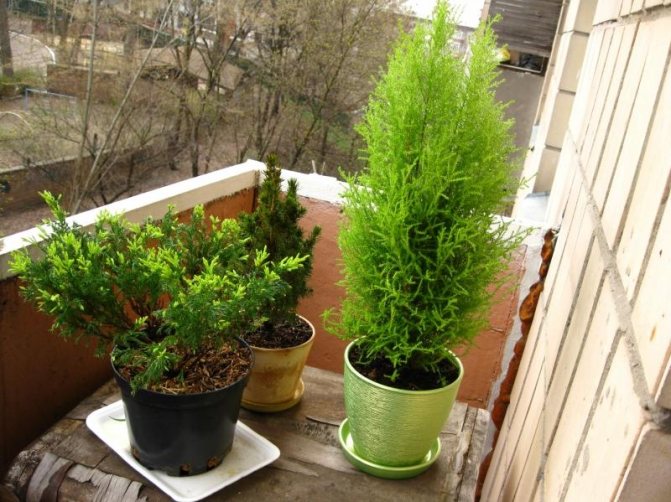

Improper care often leads to rotting of the root system, drying out of the branches.
Pests can settle on a home cypress:
- spider mite;
- shield;
- aphid;
- mealybug;
- miner moth.
The appearance of insects is often associated with dry indoor air, the removal of the plant to the street, improper planting, when soil is used without preliminary disinfection. Severely damaged shoots must be cut off. Rinse the rest of the plant with warm water, after covering the soil with a film. Treat with an insecticide or acaricide approved for home use. After 1-2 weeks it is necessary to repeat the spraying.
Possible problems in growing indoor cypress
Problems arise during cultivation due to non-observance of the rules of care or in the event of the appearance of diseases or pests.
Leaves turn yellow and fall
This can happen when there is not enough moisture or when humidifying the air or spraying the spruce branches is not performed. If you provide the plant with sufficient moisture, the leaves will be healthy and beautiful and will stop turning yellow.
The tips of the leaves dry
Foliage can dry out when moisture stagnates in the ground. As a result, the roots began to rot, and this led to the rapid drying of the tips of the leaves. The damaged parts of the roots must be removed and the plant transplanted.
Pests
They are especially dangerous for cypress when it lacks moisture. The appearance of a spider mite can be determined by the large number of spider webs on the plant. Also dangerous is the attack of the scale insect.
To control these insects, an effective method is spraying with an appropriate insecticide.
Home cypress pests
We have grown a beautiful cypress tree, we take care of it, we give some part of our soul. But at one point, it begins to dry, turn yellow, crumble. This may be due to mistakes in care, disease or insect damage. To prevent a disease or cure a plant, you need to find out the cause and eliminate it. We will talk about this further.
Only a few species of insects are dangerous to our home cypress, but they can bring significant harm to their life. The first to your attention are the scabbards, as well as false shields. They belong to the order coccids, only their families are different. The females of these insects are larger in size and they "sit in one place." Males are smaller than females and they are mobile.
The whole danger of scale insects is that they feed on plant sap, slowly and reliably killing it. Also, females are attached to one place on the leaf, and remain there to protect their larvae. Thus, they cause damage to the leaves, which manifests itself in yellow or brick-colored spots.They look like small yellowish, greenish plaques on foliage, which can be a sticky secret. If at least one scabbard is noticed, urgently take the necessary measures to eliminate them. For this you need:
- Moisten cypress with soapy water using a soft brush or cotton swab. This eliminates adult insects.
- Treat the tree with an insecticide. Also, a pot, shelf or window sill is processed, where your cypress, window glass was located. As an insecticide, you can take Actellik's solution.
Atellik is an insecticide-acaricide. It is based on organophosphorus substances, the main of which is pirimiphos-methyl. Designed to combat almost all types of pests of vegetation. Known for its high speed and duration of action, as well as a fairly wide range of action.
Important! The drug is toxic, so take precautions. Keep out of the reach of children.
Another malicious pest is the spider mite. It has a yellow-green, milky-transparent color, its dimensions vary up to 1 mm, sometimes up to 2 mm. Typical habitat is the underside of the leaves. The first signs of the pest of these insects are light dots. Further, they actively crawl all over the needles. As a result, they create cobweb-like clusters all over the place. Although mites are afraid of moisture, a simple spraying with water or soapy water does not help. It is necessary to resort to the help of actellic, alcohol and special sticks - Plant-Pin and Etisso.
Is it possible to plant an indoor cypress on the street
For cypress, planting and nursing outdoors in the garden suggests that it needs to provide the same conditions it used to grow in the wild. In the temperate and northern climatic zones, this is not possible. However, in the southern regions of the country, conditions allow cultivation in the country in the open field.
Indoor cypress, with its decorative qualities, is able to create a special atmosphere at home. However, it must be remembered that it needs careful care, otherwise it may lose its unique decorative qualities.
Is it possible and when to plant in open ground
Many owners of private houses and summer cottages often wonder whether it is possible to transplant an indoor tree onto the street. After all, cypresses look very advantageous in the landscape design of a summer cottage.
Important! Even in the south, domestic cypress trees need shelter during the winter season.
This option is possible only in southern latitudes, since in other regions the root system simply cannot withstand the winter cold. To plant an indoor cypress in the courtyard, you need to find the optimal place for it without drafts, evenly and constantly illuminated by the sun.
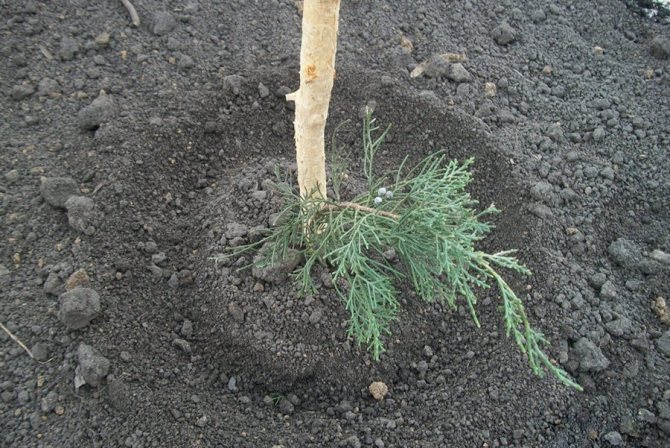

Growing an indoor southern tree is a rather troublesome business. But it's worth it, because the house will be decorated with an evergreen particle of the southern coast, exuding a delicate aroma and filling the dwelling with phytoncides that have a positive effect on human health.


